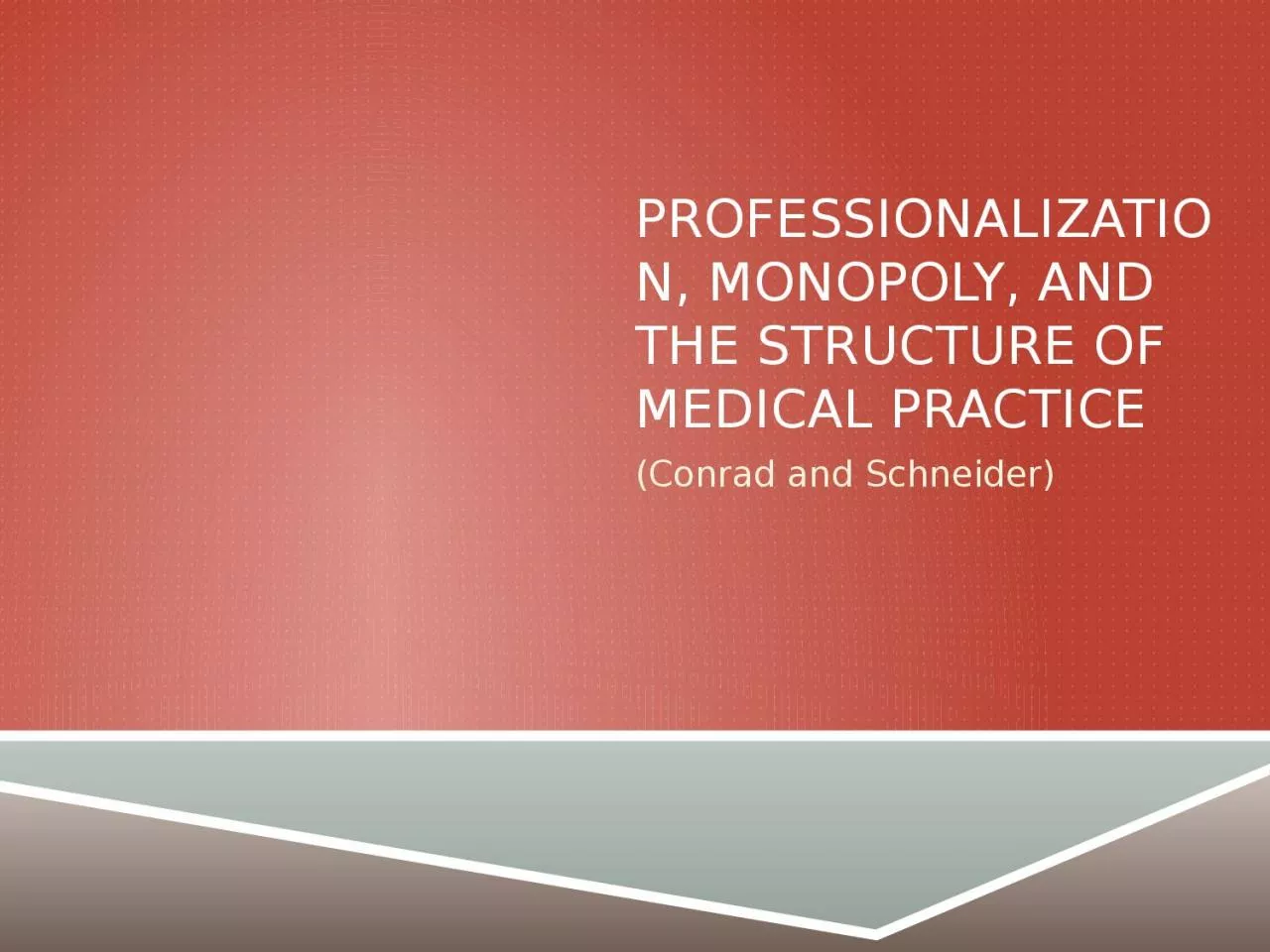PPT-Professionalization , Monopoly, and the Structure of Medical
Author : taylor | Published Date : 2024-03-13
Practice Conrad and Schneider Explanandum what is to be explained How regulars successfully organized as professionals eliminating their competitors and creating
Presentation Embed Code
Download Presentation
Download Presentation The PPT/PDF document "Professionalization , Monopoly, and the ..." is the property of its rightful owner. Permission is granted to download and print the materials on this website for personal, non-commercial use only, and to display it on your personal computer provided you do not modify the materials and that you retain all copyright notices contained in the materials. By downloading content from our website, you accept the terms of this agreement.
Professionalization , Monopoly, and the Structure of Medical: Transcript
Download Rules Of Document
"Professionalization , Monopoly, and the Structure of Medical"The content belongs to its owner. You may download and print it for personal use, without modification, and keep all copyright notices. By downloading, you agree to these terms.
Related Documents














